Discover 11 hidden attractions, cool sights, and unusual things to do in Niagara-on-the-Lake (Canada). Don't miss out on these must-see attractions: Niagara Apothecary, Fort George, and Navy Hall. Also, be sure to include Fort Mississauga in your itinerary.
Below, you can find the list of the most amazing places you should visit in Niagara-on-the-Lake (Ontario).
Table of Contents
Niagara Apothecary

Museum in Niagara-on-the-Lake, Ontario. The Niagara Apothecary was an apothecary in Niagara-on-the-Lake, Ontario, established no later than 1820, and is now a National Historic Site of Canada. It was operated by a series of successive owners, most of whom had apprenticed under the preceding owner. In the 1960s, it was purchased by the Niagara Foundation, which targeted the building and its contents for preservation. It was purchased by the provincially-owned Ontario Heritage Foundation in 1969, which undertook a preservation effort culminating in May 1971, when the property was re-opened as a museum.
The museum is rendered as a typical Confederation-era apothecary. It is operated by the Ontario College of Pharmacy, and receives about 100,000 visitors annually.[1]
Fort George
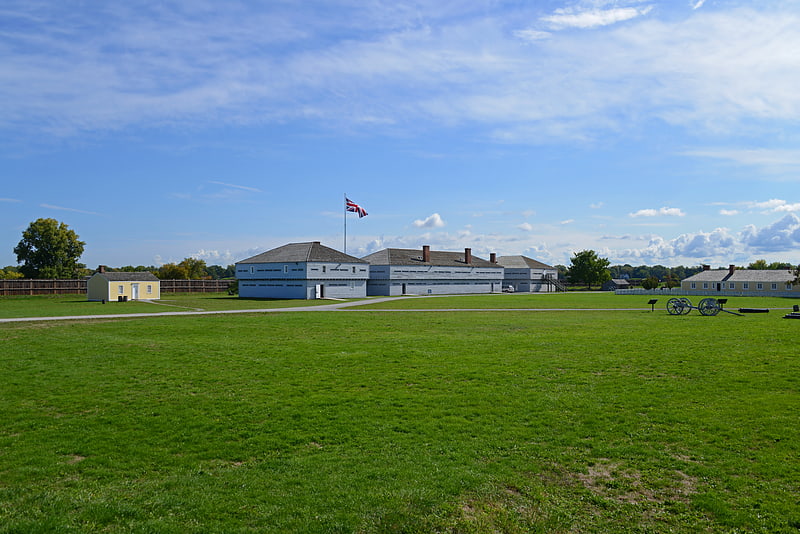
A day in the life during the War of 1812. Fort George was a military fortification in Niagara-on-the-Lake, Ontario, Canada. The fort was used by the British Army, the Canadian militia, and the United States Armed Forces for a brief period. The fort was mostly destroyed during the War of 1812. The site of the fort has been a National Historic Site of Canada since 1921, and features a reconstruction of Fort George.
The British established Fort George in the 1790s to replace Fort Niagara. Many of its structures were demolished in May 1813, during the Battle of Fort George. After the battle, American forces occupied the fort for seven months before withdrawing in December 1813. Although the British regained the fort shortly afterwards, little effort was put into its reconstruction after they captured Fort Niagara the following week. The poor wartime design of Fort George led its replacement by Fort Mississauga in the 1820s, although the grounds of Fort George saw some use by the military until the end of the First World War. During the late-1930s, the Niagara Parks Commission built a reconstruction of Fort George. The site was opened in 1940, and has been managed as a historic site and living museum by Parks Canada since 1969.
The fort has irregular-shaped earthwork with six bastions, and a number of reconstructed buildings within it. The restored gunpowder magazine is the only building that dates to the original Fort George. The fort forms a part of Fort George National Historic Site, which also includes Navy Hall to the east of the fort. The historic site serves as a learning resource for the War of 1812, 19th-century military life in Canada, and the historic preservation movement during the 1930s.[2]
Address: 51 Queens Parade, L0S 1J0 Niagara-on-the-Lake
Navy Hall
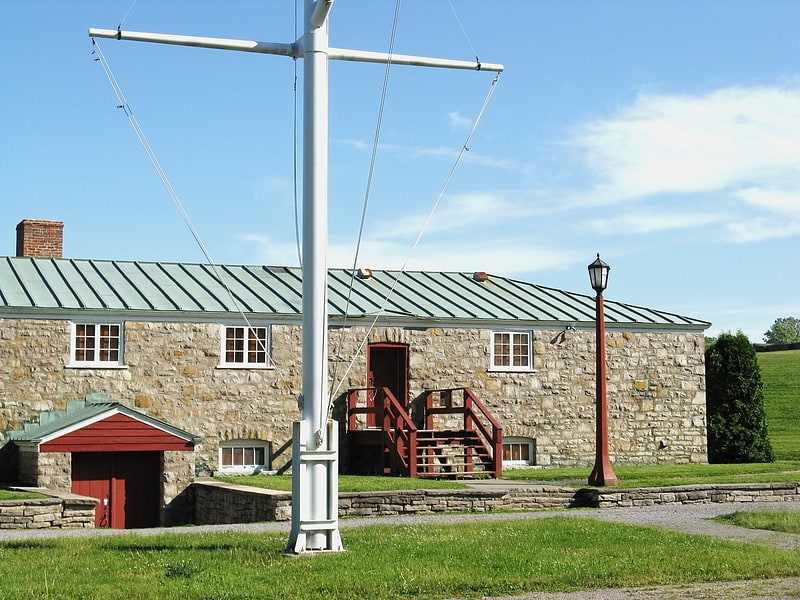
Building in Niagara-on-the-Lake, Ontario. Navy Hall is a wooden structure encased within a stone structure that was the site of Upper Canada's first provincial parliament, from 1792 to 1796. It is a unit of Fort George National Historic Site located in Niagara-on-the-Lake, Ontario, then known as Newark, Upper Canada. It sits on Ricardo Street near the shore of the Niagara River, near Fort George, and across the river from Fort Niagara.
The original Navy Hall was built as naval establishment in 1765 by Royal Naval Commanders. It consisted of a small shipyard, docks, stores and residences, and was a local supply depot, as well as a trans-shipment point for posts on the upper Great Lakes. During the American Revolution, the Provincial Marine wintered at this complex. In 1792, John Graves Simcoe, the first Lieutenant-Governor of Upper Canada, converted one of the buildings into his residence and office.
In 1792, the first parliament in Upper Canada met in a tent near this site. The first session to sit in Navy Hall was on September 17, 1792. The next year, Simcoe decided to move the capital to York, Upper Canada (now Toronto), a site less vulnerable to attack from the United States. While the first purpose-built Parliament Buildings were being constructed there, Newark continued to serve as the seat of government until 1796. After Parliament left, the building was used as a dining hall by officers from nearby Fort George. Destroyed by U.S. artillery fire in the War of 1812, some of the fort's buildings were re-built by the British, and today's Navy Hall is the only one remaining of that reconstruction.
Originally a wooden storehouse, it was built shortly after the War of 1812, and became a barracks for British troops in 1838, during the Rebellion of 1837-38. It served as a medical commissary during World War I for Canadian troops at what became Camp Niagara, a site preparing soldiers for overseas service. During the 1930s, it was moved to its present site by the Niagara Parks Commission and encased in stone.
The current building is managed by Parks Canada as part of Fort George, one of several national historic sites in the region which fall under the administrative umbrella 'Niagara National Historic Sites'. Navy Hall is rented for private functions, but generally closed to the public due to staffing shortages. It houses artifacts from its more than 200 years of history. Located across the street from Fort George, it invites visitors to read outdoor interpretive displays, view the Simcoe Memorial monument, and enjoy the tranquility of its parkland views of the Niagara River and Fort Niagara in New York. Parking is available at the site, convenient for visitors or those embarking on a steamboat excursion, which departs from a nearby dock.[3]
Address: 305 Ricardo Street, Niagara-on-the-Lake
Fort Mississauga
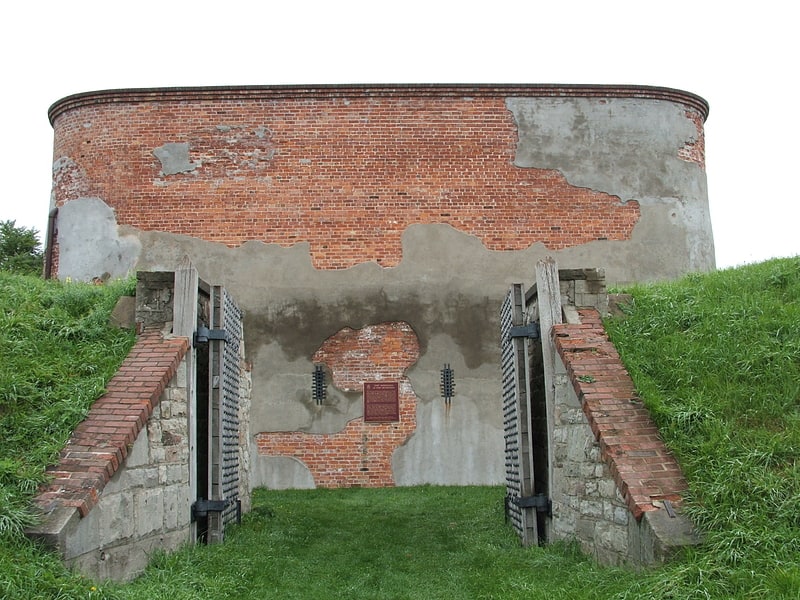
Historical landmark in Niagara-on-the-Lake, Ontario. Fort Mississauga National Historic Site is a fort on the shore of Lake Ontario, at the mouth of the Niagara River in Niagara-on-the-Lake, Ontario, Canada. The fort today consists of a box–shaped brick tower and historic star–shaped earthworks. The all–brick fort was built from 1814–1816 during the War of 1812, to replace nearby Fort George. It was built on a foundation of brick and stone salvaged from rubble left after retreating United States forces burned the nearby town of Newark in December, 1813. It would help in the defence of Upper Canada the following year, as part of a regional network that included Fort George, Navy Hall, and Butler's Barracks. However, the fort would not be completed until after the war.[4]
Address: 223 Queen St, L0S 1J0 Niagara-on-the-Lake
Brock's Monument

Monument in Niagara-on-the-Lake, Ontario. Brock's Monument is a 56-metre column atop Queenston Heights in Queenston, Ontario, Canada, dedicated to Major General Sir Isaac Brock, one of Canada's heroes of the War of 1812. Brock, a British Army officer in charge of defending Upper Canada from a United States invasion, and one of his aides-de-camp, Lieutenant-Colonel John Macdonell, are interred at the monument's base on the heights above the battlefield where both fell during the Battle of Queenston Heights. The current monument was constructed between 1853 and 1856, which replaced an earlier Monument to Brock on the battlefield. Parks Canada maintains the monument, the most imposing feature of Queenston Heights National Historic Site. It is the fourth oldest war memorial in Canada.[5]
Address: Queenston Heights Park, Niagara-on-the-Lake
Lewiston–Queenston Bridge

Arch bridge in Niagara County, New York. The Lewiston–Queenston Bridge, also known as the Queenston–Lewiston Bridge, is an arch bridge that crosses the Niagara River gorge just south of the Niagara Escarpment. The bridge was officially opened on November 1, 1962. It is an international bridge between the United States and Canada. It connects Interstate 190 in the town of Lewiston, New York to Highway 405 in the community of Queenston, Ontario. The Lewiston–Queenston Bridge is a twin of the Rainbow Bridge at Niagara Falls and designed by Richard Lee.
Customs plazas are located on both ends of the bridge, with tolls only being charged on entering Canada (US$3.75 or CAD$5.00 per automobile as of May 28, 2019). The bridge accepts E-ZPass electronic toll collection and houses the second Canadian E-ZPass collection facility, after the nearby Peace Bridge. Also, two duty-free stores are located between the two plazas.
The bridge permits no pedestrians, but licensed taxi service is permitted. The Lewiston–Queenston Bridge lacks expedited border clearance facilities for NEXUS and FAST card holders traveling from the United States into Canada, but does have a NEXUS lane for travel into the United States.
Gantries have lights indicating the direction of traffic as the lanes are reversible. Speed limit is posted in kilometres and miles per hour (15 mph or 24 km/h limit) along the bridge. Canadian and United States flags fly at the midpoint on the south side of the bridge.[6]
Address: Interstate 190, 14092 Lewiston (Stamford)
Father Millet Cross
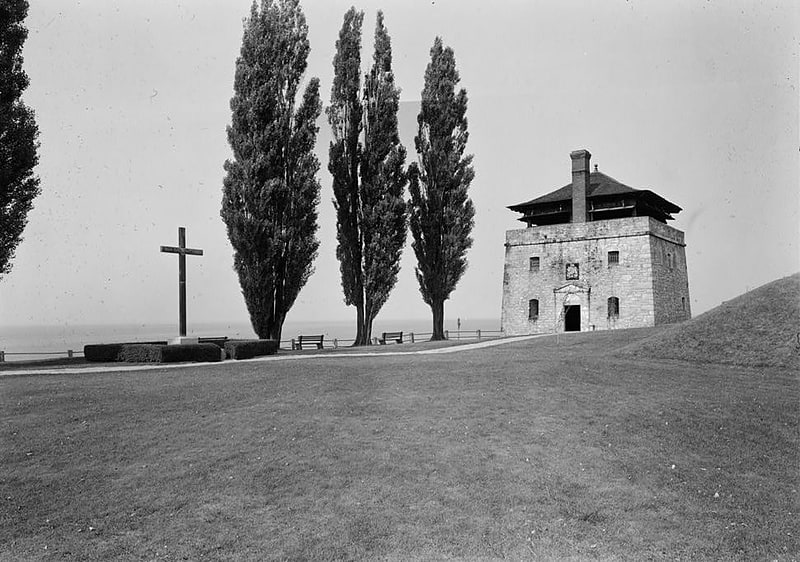
The Father Millet Cross is a memorial on the grounds of Fort Niagara in Youngstown, New York. The 18-foot bronze cross is a replacement for the wooden cross erected by Pierre Millet at the New French Fort Denonville in 1688. During the preceding winter, disease and starvation overwhelmed the fort's garrison of a hundred men and only twelve of them were saved by a rescue party. Father Millet, a Jesuit missionary, was with this rescue party. On Good Friday he celebrated Mass and erected and dedicated a cross invoking God's mercy for the plague-stricken men. On the beam of the cross is inscribed: "REGN. VINC. IMP. CHRS." an abbreviation for Regnat, Vincit, Imperat, Christus which is Latin for Christ reigns, conquers, and commands.
On September 5, 1925, Calvin Coolidge set aside an 18-foot square section (324 ft², 30.1 m², or 0.0074 acres) of Fort Niagara Military Reservation "for the erection of another cross commemorative of the cross erected and blessed by Father Millett." It was the smallest-ever national monument in the United States. In 1926 the New York State Knights of Columbus dedicated the memorial cross "not only to Father Millet, but to those other priests whose heroism took Christianity into the wilderness and whose devotion sought to create in this new world a new France." It stands on the shore of Lake Ontario just west of the fort's north redoubt.
Father Millet Cross National Monument was originally administered by the War Department but was transferred to the National Park Service in 1933 by executive order. In 1945, Fort Niagara was declared surplus by the U.S. Army and plans were laid to convert the site to a state park. On September 7, 1949, Congress abolished the national monument and transferred the memorial to the state of New York for public use as part of Fort Niagara State Park.[7]
Fort Niagara Light
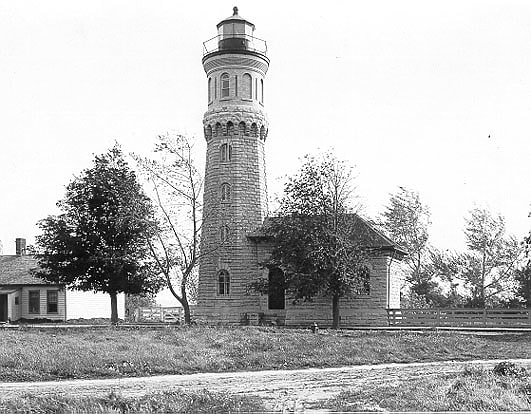
Lighthouse in Niagara County, New York. Fort Niagara Light is an inactive lighthouse on the Niagara River on the south shore of Lake Ontario in New York state. It is located on the grounds of Fort Niagara.[8]
McFarland House Museum

Museum, Historical place, Architecture
Address: 15927 Niagara Parkway, ON L0S 1J0 Niagara-on-the-Lake
Court House Theatre

Niagara District Court House, better known as the Court House Theatre, is a former court house and venue for the Shaw Festival in Niagara-on-the-Lake, Ontario, Canada.
The neo-classical three-storey building was constructed between 1846 and 1847 to designs by the Toronto architect William Thomas (and built by Garvie and Co.) for the then Niagara District. The building replaced an earlier court house removed for fear of it being in-range of cannon fire from Fort Niagara. Inside it had a courtroom, town hall chambers, offices and jail cells.
The building was used as one of a few venues for the 1850 Provincial Agricultural Fair of Canada West. The court-house function remained until judicial courts moved to St. Catharines in 1863; the building then served as town hall and jail until 1866. It became an orphanage for girls from England from 1869 to the early 20th century.
In 1962 the court house became home to the Shaw Festival. It received designation as a National Historic Site in 1981. As of the 2018 season, it was retired as an active performance venue and re-purposed for rehearsals, training, education, and expanded audience programs.[9]
Address: 26 Queen St, L0S 1J0 Niagara-on-the-Lake
St. Mark's Anglican Church
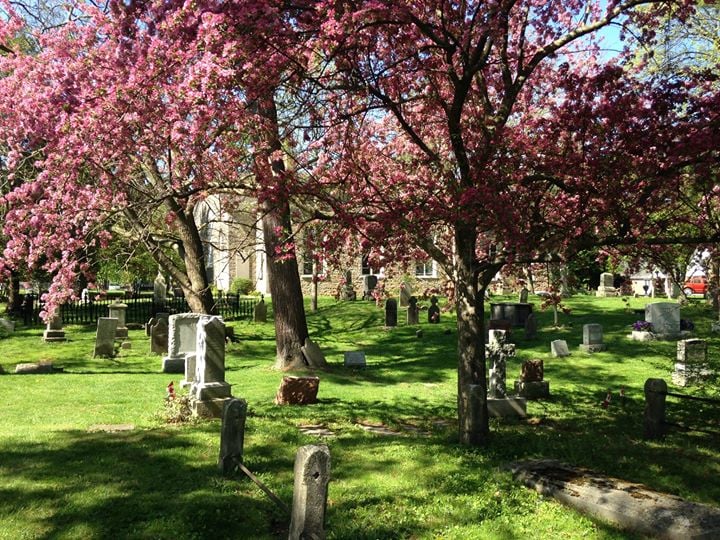
Church
Address: Byron Street, L0S 1J0 Niagara-on-the-Lake